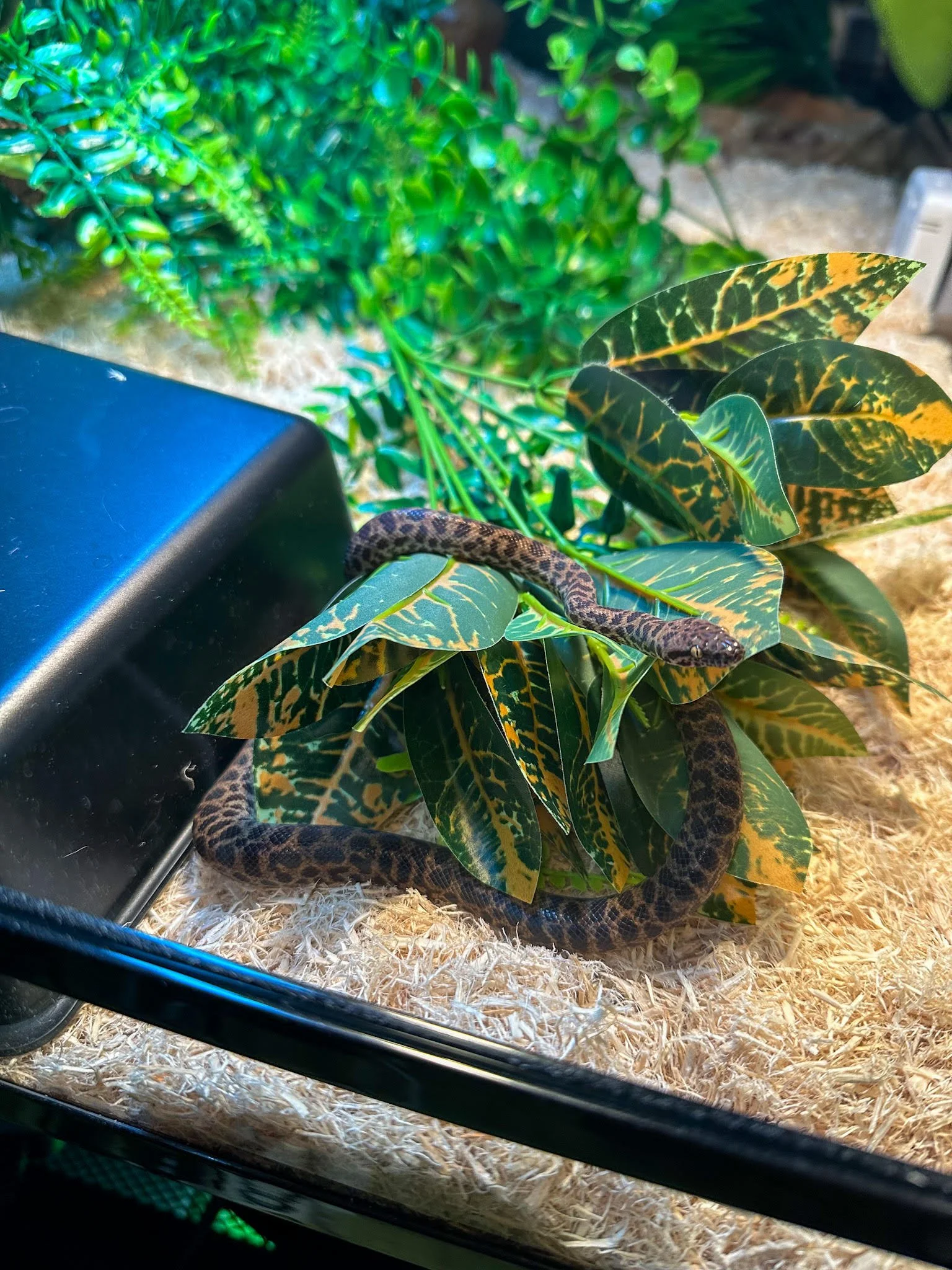Spotted Python (Antaresia maculosa) Care Guide
Our first Spotted Python, Navani, when she was just a few months old. We put her into way too big of an enclosure!
Spotted Pythons are by far one of the best pet snakes and a personal favorite of ours! That being said, the care for Antaresia is pretty similar, and this Spotted Python care guide will apply to the whole genus.
Spotted Pythons are a small python species from Australia, they make great pets due to their hardiness and max size being around 3.5 to 4 feet. This species displays sexual dimorphism; females will generally get larger than males.
Details and Natural History:
Spotted Pythons’ natural habitats range from forests to more open ranges and are generally warm and temperate.
They are usually found around caves, rocky outcrops, and logs where they can hide, and they tend to like being in small, snug hides. While they are not very arboreal, they will definitely climb and have been known to catch bats while hanging from the tops of caves!
Spotted pythons are shy but curious. Inside their enclosures, I always use a hook with my adults because they have a strong feeding response, biting first and asking questions later! However, once out, they are docile and very curious, often spending time trying to climb.
Habitat and Enclosure Recommendations
I have kept this species in various enclosure types, and honestly find they don’t prefer as much space (generally).
They might use it at night but generally either stay as high and snug as they can or as low and snug as they can! The takeaway here is to default to height if you want to offer a bigger enclosure; but put a hide up there for them. Provide a lower hide as well, and subterranean hides are a surprising favorite!
Tip: a paper towel roll or two in the enclosure or partially buried in the substrate is always a favorite with smaller Spotted Pythons!
With an adult at 4 feet, I would try to ensure that a single animal is in a minimum enclosure of 2ft L x 2ft D x 1.5ft H.
My rule for minimum enclosure size is that the width times depth should generally be equal or greater than the animal's length. (2ft L x 2ft D = 4ft) Height is where it is tricky with this species since, again, they may or may not use it. If you can offer it, cool, make sure there is a hide up there, and your chances of them using it are way higher! I keep most of my adults in at least a 1/1.5 ft height enclosure to offer an elevated hide (its 50/50 if they use it).
I prefer coco fiber chips for various reasons, but honestly, they don’t seem very picky. I have had a few specimens that will burrow if given the chance and others with no interest.
Note on racks: I know of several people who keep this species successfully in racks and have 1 adult who seems to prefer the small enclosed space (more relaxed when handling vs when he is in a bigger enclosure). If you choose a rack, just ensure they still have room to exercise and provide plenty of enrichment.
Temperature and Light
The ideal temperature for the species is an ambient temperature in the high 70s to mid 80s (78-85), with a hot spot in the high 80s (88-90).
A quick review of the average temperature in their native area shows the high average temperature ranges from the mid-70s to the high 80s and lows all the way down to the low 50s during a month or two out of the year.
I have tried light, no light (except the light in the room), light + UVB. No real difference in behavior, eating, etc. If you can do UVB, it is generally recommended.
Humidity
While this species’ home range has higher humidity, frequently in the 65%-70% range, they are incredibly resilient and don’t seem to care about humidity (within reason). Maintain 30%-80% humidity and fresh, clean water, and they will continue to thrive; however, aiming to maintain humidity closer to their natural environment is always recommended.
Diet and Feeding
One of the best parts about Spotted Pythons is their food drive! They eat more consistently than any other species I keep; just watch out for your fingers. This species can generally be kept on mice their entire lives. For babies and juveniles, I go for a prey size of 10-15% of their weight and feed every 5-7 days. Once they are adult size, which most reach around 1.5 to 2 years, I slow it down to 5%-10% of their body weight every 10-14 days.

